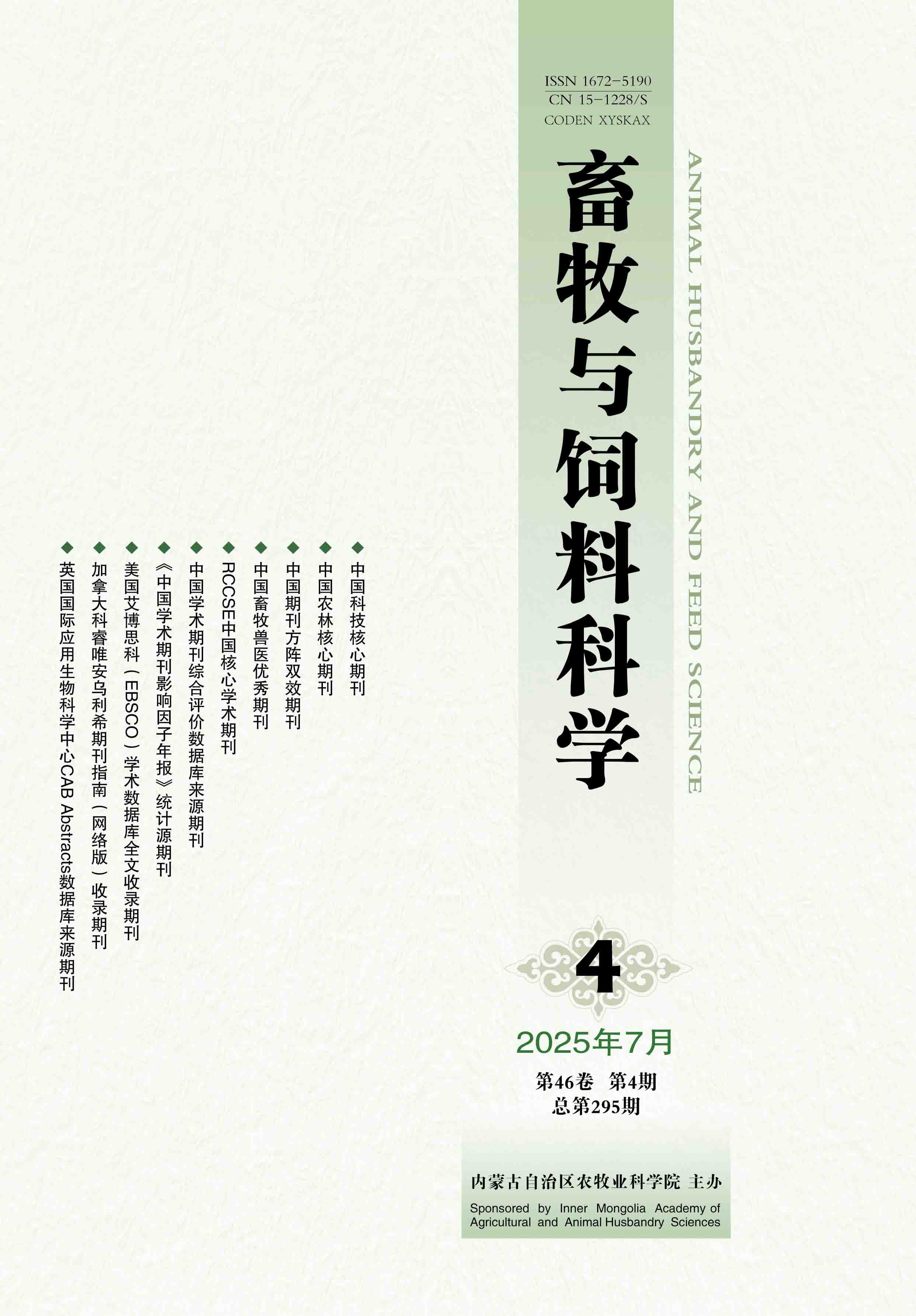Select
Effect of Milk Replacer Feeding on Growth Performance of Donkey Foal
Dalajiruga1, ZHANG Yong-chang1, WU Hai-qing2, LIU Yong-bin2, Narenhua1, Chagan2 (1.College of Animal Science,Inner Mongolia Agricultural University,Hohhot 010018,China,2.1nner Mongolia Academy of Agricultural andAnimal Husbandry Sciences, Hohhot 010031,China)
2018, 39(9):
46-52.
doi:10.12160/j.issn.1672-5190.2018.09.012
Abstract
(
197 )
PDF (774KB)
(
108
)
Save
Related Articles |
Metrics
The present study was designed to evaluate the influence of milk replacer feeding on growth performance of donkey foal. A total of 40 healthy donkey foals aged 2 (n=10), 3 (n=10), 4 (n=10) and 5 (n=10) months were included in this study. The donkey foals with the same months of age had similar date of birth and body weight, and were randomly assigned to one of two groups: an experimental group (n=5) fed with milk replacer and a control group (n=5) fed with breast milk. The experimental period lasted for 30 days. The healthy situation of the donkey foals during the whole experimental period was observed and recorded. The body weight and body sizes indexes (height at withers, chest circumference and body slanting length) of the donkey foals in each experimental group and control group at the 0, 10^th, 20^th and 30^th day of experiment were determined, respectively, and the intergroup differences in the indexes of the donkey foals with the same months of age were statistically assessed. Furthermore, the differences in daily gain and average daily variation of body sizes indexes between experimental group and control group at the different experimental phases C0-10^th days, 10^th-20^th days, 20^th-30^th days, and 0-30^th days of the experiment) were compared. The results showed that for the donkey foals aged 2 months, the experimental group had extremely significantly higher body weight at the 10^th, 20^th and 30^th day of experiment compared with control group (P〈0.01 ); for the donkey foals aged 5 months, the experimental group had significantly and extremely significantly higher body weight at the 20^th and 30^th day of experiment compared with control group (P〈0.05 and P〈0.01), respectively; the donkey foals in the four experimental groups had higher daily gain during 0-10^th days, lO^th-20^th days, 20^th-30^th days, and 0-30^th days of the experiment compared to their counterparts in the four control groups; for the donkey foals aged 5 months, the experimental group had significantly higher height at withers at the 10^th, 20^th and 30^th day of experiment compared with control group (P〈O.05); for the donkey foals aged 2 and 5 months, the experimental group had higher average daily variation of height at withers during 0-10^th days, 10^th-20^th days, 20^th-30^th days, and 0-30^th days of the experiment compared with control group; for the donkey foals aged 2 months, the experimental group had extremely significantly higher chest circumference at the 20^th and 30^th day of experiment compared with control group (P〈0.01); for the donkey foals aged 3 months, the experimental group had extremely significantly higher chest circumference at the 10^th, 20^th and 30^th day of experiment compared with control group (P〈0.01 ); for the donkey foals aged 5 months, the experimental group had significantly higher chest circumference at the 20^th and 30^th day of experiment compared with control group (P〈0.05); the donkey foals in the four experimental groups had higher average daily variation of chest circumference during 0-30^th days of the experiment compared to their counterparts in the four control groups; for the donkey foals aged 2 and 5 months, the experimental group had significantly higher body slanting length at the 30^th day of experiment compared with control group (P〈0.05); for the donkey foals aged 3 months, the experimental group had significantly higher body slanting length at the 10^th, 20^th and 30^th day of experiment compared with control group (P〈0.05); for the donkey foals aged 4 months, the experimental group had significantly higher body slanting length at the 20^th and 30^th day of experiment compared with control group (P〈0.05); the donkey foals in the four experimental groups had higher average daily variation of body slanting length during 10^th- 20^th days, 20^th- 30^th days, and 0-30^th days of the experiment compared to their counterparts in the four control groups. Taken together, we concluded that milk replacer feeding promoted the growth and development of donkey foals, and there was possibility of replacement of breast milk by milk replacer in donkey foals rearing.








